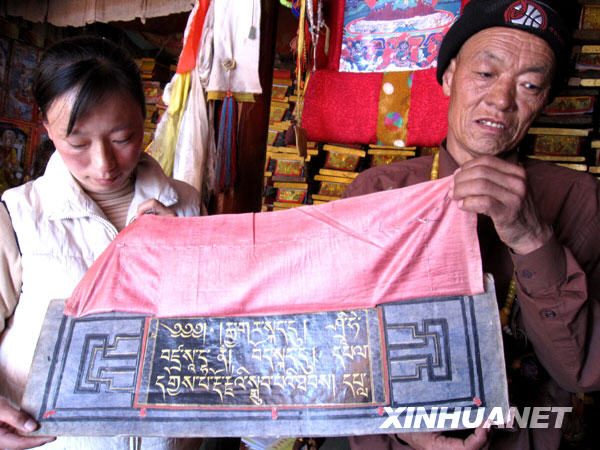The volumes "are an exceptionally precious cultural heritage in our country," said Gama Thugar, head of the Yushu Cultural Relics Bureau.
Religious treasure

"The Tripitaka is a religious treasure, so the museum was built to look like a monastery," Dechong said. She said interior decoration was still being completed and the museum would open to visitors after the entire collection was moved in. She said she didn't know exactly when that would happen.
The Tripitaka comprises sutras, poems, art and scientific knowledge. The Tripitaka has more than 700 volumes made of cowhide, birch bark or black, blue or green traditional Tibetan paper with golden and silver powder, vermilion markings and ink. The bindings are carved or incised with traditional patterns or words of the Om Mani Padme Hum, the most common prayer in Tibetan Buddhism.